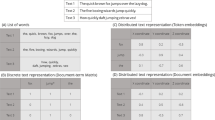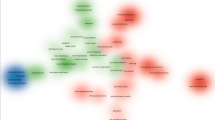Abstract
Web search users complain of the inaccurate results produced by current search engines. Most of these inaccurate results are due to a failure to understand the user’s search goal. This paper proposes a method to extract users’ intentions and to build an intention map representing these extracted intentions. The proposed method makes intention vectors from clicked pages from previous search logs obtained on a given query. The components of the intention vector are weights of the keywords in a document. It extracts user’s intentions by using clustering the intention vectors and extracting intention keywords from each cluster. The extracted the intentions on a query are represented in an intention map. For the efficiency analysis of intention map, we extracted user’s intentions using 2,600 search log data a current domestic commercial search engine. The experimental results with a search engine using the intention maps show statistically significant improvements in user satisfaction scores.









Similar content being viewed by others
References
Chen Z, Lin F, Liu H, Ma W-Y, Wenyin L (2002) User intention modeling in web applications using data mining. World Wide Web 5(2):181–192
Daniel R, Danny L (2004) Understanding user goals in web search. Proceedings of the 13th international conference on World Wide Web, pp. 17–20
Dreilinger D, Howe E (1997) Experience with selecting search engine using metasearch. ACM Trans Inform Syst 15(3):195–222
Fausett V (1994) Fundamentals of neural networks: architectures, algorithms, and applications. Prentice-Hall
Gose E, Johnsonbaugh R, Steve J (1996) Pattern recognition and image analysis. Prentice Hall
GWW (2009) Google Groups (Web API) http://googlewonderwheel.com, Accessed 27 December 2010
Hosking J, Grundy J, Chaffe T, MacDonald D, Halytskyy Y, Jones N (2010) http://thinkbase.cs.auckland.ac.nz/, Accessed 27 December 2010
Jansen B, Spink A (2006) How are we searching the world wide web? A comparison of nine search engine transaction logs. Information Processing & Management in Formal Methods for Information Retrieval 1(42):248–263
Jansen B, Spink A, Saracevic T (2000) Real life, real users, and real needs: a study and analysis of user queries on the web. Inf Process Manag 86(2):207–227
Kohone T (1995) Self-organizing maps. Springer Verlag
Lee U, Liu Z, Cho J (2005) Automatic identification of user goals in web search. Proceedings of the 14th international Conference on World Wide Web. ACM, New York, pp 391–400
Mel’cuk I (1988). Dependency syntax: theory and practice. State Univ. of New York Press
Park GW, Chae JG, Lee DH, Lee SH (2008) User Intention based Personalized Search: HPS(Hierarchical Phrase Serch). the WSEAS International Conference on Applied Computing Conference 7:205–210
Rumelhart E (1980) Schemata: the building block s of cognition. Erlbaum, NJ
Salton G, McGill J (1983) Introduction to modern information retrieval, McGraw-Hill
Spink A (2001) Searching the Web: the public and their queries. J Am Soc Inf Sci Technol 53(2):226–234
Xu J, Croft B (1996) Query expansion using local and global document analysis. Proc. 19th ACM SIGIR conference on Research and development in information retrieval, pp. 4–11
Author information
Authors and Affiliations
Corresponding author
Additional information
This work was supported by National Research Foundation of Korea Grant funded by the Korean Government (2010-0014325)
Rights and permissions
About this article
Cite this article
Park, K., Jee, H., Lee, T. et al. Automatic extraction of user’s search intention from web search logs. Multimed Tools Appl 61, 145–162 (2012). https://doi.org/10.1007/s11042-010-0723-8
Published:
Issue Date:
DOI: https://doi.org/10.1007/s11042-010-0723-8




